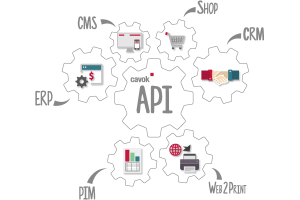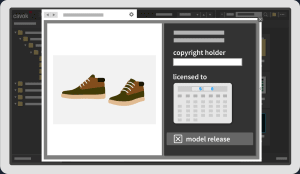5 reasons why e-commerce managers need a DAM system
Many companies rely on their own online shop in addition to marketplaces for successful e-commerce. To offer customers an optimal online shopping experience web shops need a lot of care. While customers can view and touch items in the local store, in online retailing comprehensive product information and especially images and videos of the product help customers to make a purchase decision. Therefore, in addition to simple product pictures, marketing images are usually included as well. These show the products in use and can usually be reused elsewhere from a marketing point of view - for example on the company's social media channels or in the printed product catalogue. A digital asset management (DAM) solution can help web shop managers keep track of this flood of images:
DAM speeds up the search for the right file
What looks appealing in the online shop can cause a lot of administrative work in the background, which has to be done by several people. Especially the search for files can take up a lot of time if they are stored locally or buried in individual systems such as the CMS or PIM system. Even if there is a central file server, files are usually hidden in a nested folder structure. New colleagues or external partners in particular often find it difficult to navigate through these historically grown structures. The naming of files is also not always consistent. Or files are stored twice or three times, especially if images are not only used on the website and therefore multiple versions and variants are created. The original files are then difficult to find or the file found is in an unsuitable resolution or format. Such problems can cost you and your collegues a lot of time!
With a DAM system, all digital files, such as graphics, videos, music or text files, are stored in a central location, managed and made accessible to users. These can leave the classic folder structure behind and find files much more quickly, even without the help of colleagues. This is possible via intelligent search functions and the use of metadata. Metadata is information that is stored on the file in the DAM system. The DAM system cavok additionally offer the possibility of finding images of the same product more easily via a similarity search. Based on visual similarities, the DAM finds a similar image or duplicate. This function can also be used to find the high-resolution original file based on a tiny webshop image.
DAM makes workflows more efficient
DAM takes unnecessary work away
DAM simplifies (international) brand management
International partners who run their own online shop in their national language or international colleagues can also access all relevant files together and work with you. The user interface of a DAM system can be adapted to different languages so that colleagues from different countries can use it easily. Helpful features, such as the automatic translation of keywords entered, enable everyone to find files quickly and easily. This way, partners always have the latest images and product descriptions available. The marketing department, on the other hand, has the certainty that all brand standards are adhered to. This is because they have control over which original images are released for use. At the same time, the administrator can determine to whom which files are displayed in the system or which documents are only accessible to the internal marketing team, for example. Another advantage: with some DAM systems, even employees without the appropriate programmes can preview Photoshop or InDesign files, for example.
DAM helps you to avoid expensive licence errors
These are just five examples of how you can save valuable time with the help of a digital asset management system. Get in touch with us and we will show you how our DAM system cavok can take your e business on the next level.



